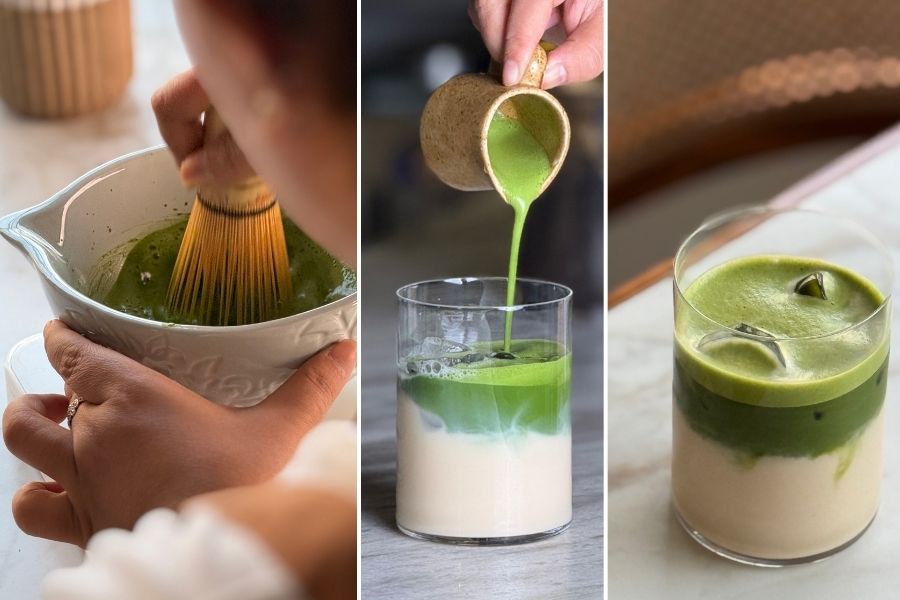Matcha is having a moment. It is everywhere — in bright green lattes, layered frappes and detox drinks with pastel cups and perfect foam.
For some, it’s an alternative to coffee. For others, it’s a winner for its instagrammable aesthetics.
But for a growing group of people in Kolkata, matcha is neither fad nor status symbol. It is a ritual.
“Not every green powder can be labeled as matcha,” says Ankita Sarkar, a home brewer and coffee content creator who runs a private matcha menu from her home café. “People just say matcha tastes like grass. They don’t even know what it is.”
She’s not wrong. For most, the term “matcha” gets lost in translation somewhere between tea and trend.
What matcha really is
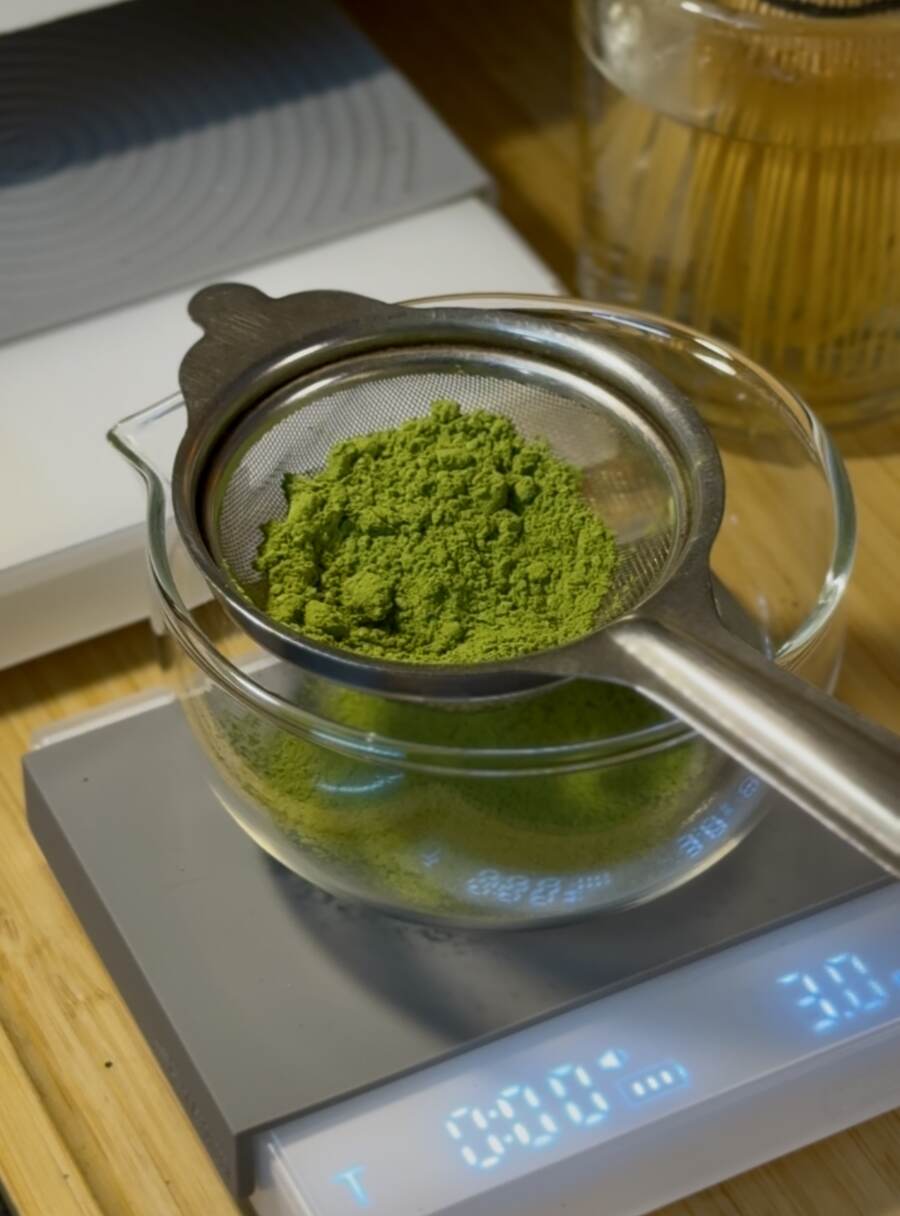
Matcha is powdered tea leaves and the best comes from the youngest leaves Ankita Sarkar
“Matcha is the powder form of green tea where we just drink the concentrate,” Ankita explains.
For people who confuse Matcha with tea, she uses a simple analogy. “Matcha is like Turkish coffee and green tea is like drip coffee,” she says. “Turkish coffee grounds are so fine that they dissolve in water, and you drink the whole thing. Similarly, matcha is powdered tea leaves — you drink the leaf itself.”
The magic lies in how it’s grown. In Japan, farmers hand-pick the youngest tea leaves grown under shade. The stems and veins are removed, leaving only the softest parts — called tencha. These are stone-ground into a fine, bright-green powder.
“When you drink matcha, you’re literally consuming the leaf,” Ankita says. “That’s why it’s so intense. People think it tastes grassy, but it actually tastes like fresh leaves.”
From Hong Kong to Kolkata
Ashmita Ghosh, head of marketing for Bright Hospitality and AMPM, discovered matcha while travelling for work.
Her team visited cafés and matcha bars in Hong Kong, Bangkok and London while researching for their new café brand. “We went to places like Matchali in Hong Kong and tasted the real thing,” she says. “That’s when we realised how specific matcha really is.”
Matcha, she explains, is a GI-tagged product — meaning it can only come from certain Japanese regions such as Uji, Kyoto or Kagoshima. “It’s like champagne,” Ashmita says. “You can have sparkling wine anywhere, but you can’t call it champagne unless it’s from Champagne. It’s the same with matcha.”
How to make matcha the right way
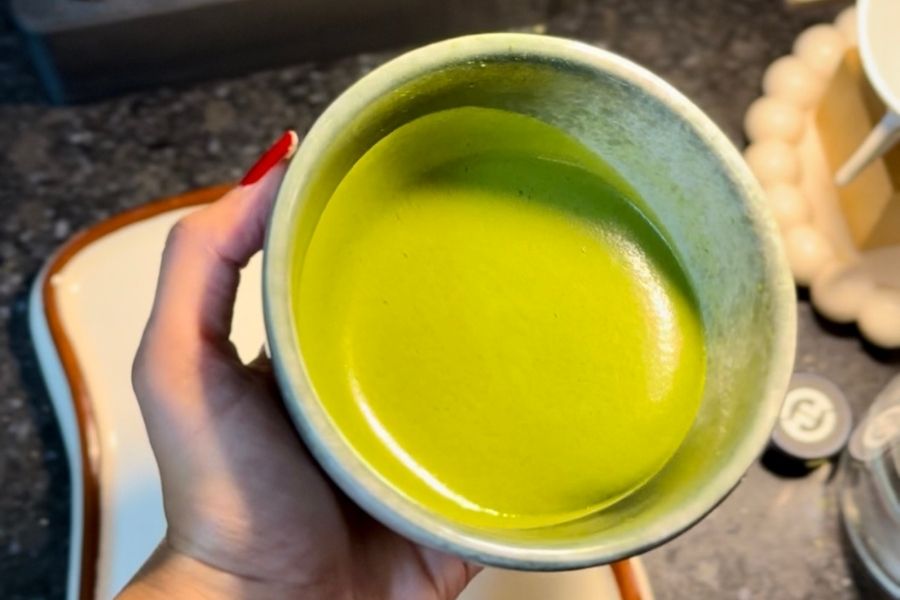
The basics of a good matcha lies in the way its made Ankita Sarkar
Real matcha is whisked, not stirred.
“There are two traditional styles,” Ankita explains. “Usucha is thinner — you take two to three grams of matcha and whisk it with 80 to 100ml of warm water. It’s for tasting the quality of the matcha, like coffee cupping.”
The other is koicha, which is thicker and stronger. “I use three grams of matcha with 30ml of water — a 1:10 ratio,” she says. “That’s my base for lattes or iced matcha drinks. You can’t drink it plain; it’s too strong.”
Her most popular recipe is the Spanish Matcha Latte — sweet, creamy, and beginner-friendly. “I always suggest Spanish or vanilla matcha to first-timers,” she says. “It balances the umami and astringency.”
The whisking secret
Good matcha starts with the whisk. Ankita swears by her “30-20-10 rule”.
“Take around three grams of matcha and 30ml of 80°C water,” she explains. “Whisk vigorously in a W-pattern for 30 seconds, slow down for 20 seconds, and finish with 10 seconds of gentle strokes to smooth the foam.”
The result? “A silky microfoam with a soft shine,” she says.
And yes, she laughs at the online comments calling the bamboo whisk (chasen) a “shaving brush”. “It’s not funny when someone uses a spoon instead,” she says. “You can’t get the same texture.”
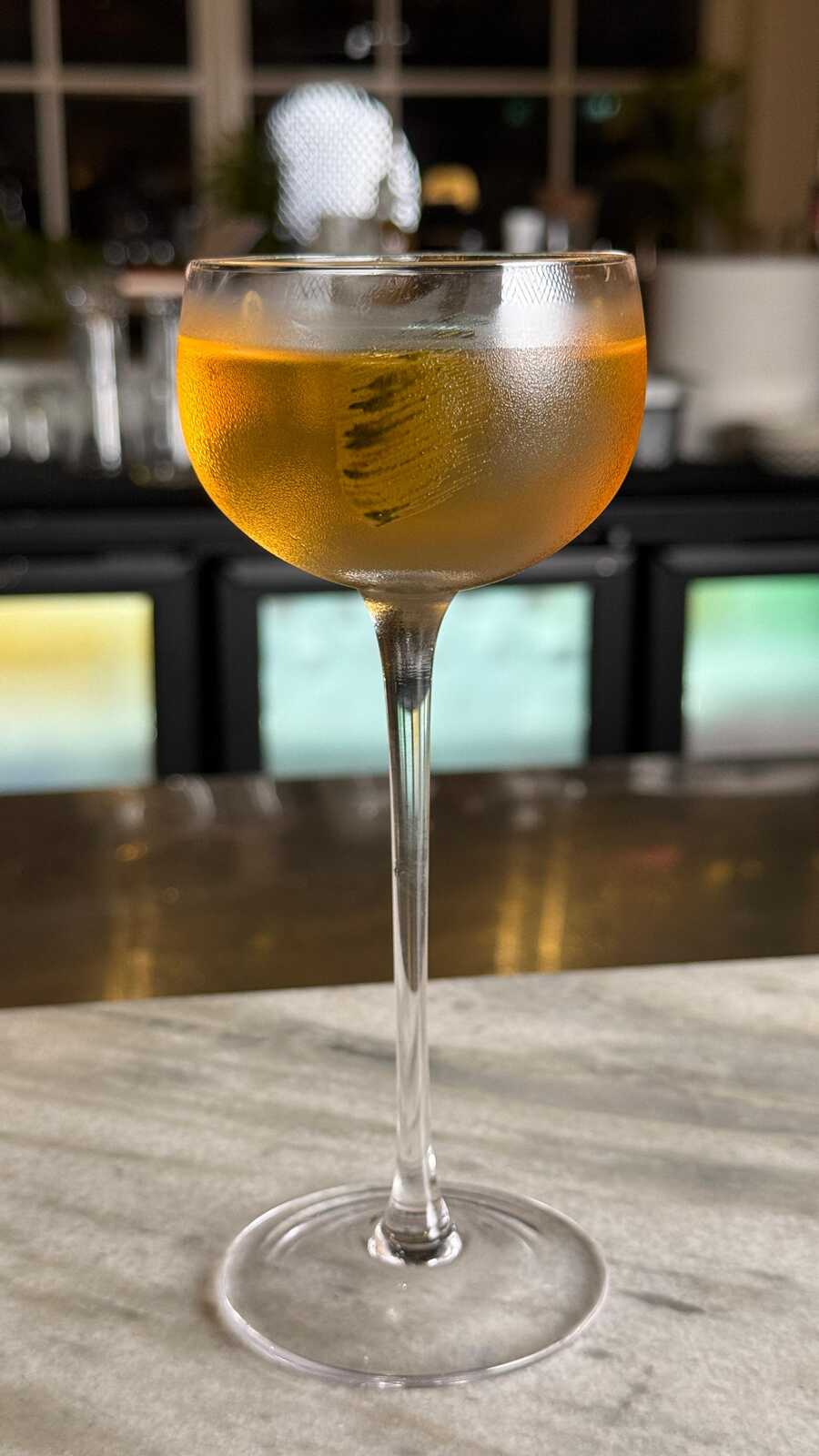
AMPM’s Odyssey of Time AMPM
At AMPM, the team went one step further — matcha cocktails. “It has this nutty, umami flavour with a hint of sweetness,” Ashmita says. “We use it in our Odyssey of Time cocktail, a tequila-based martini with a matcha garnish. It’s one of our bestsellers.”
Good matcha vs. bad matcha
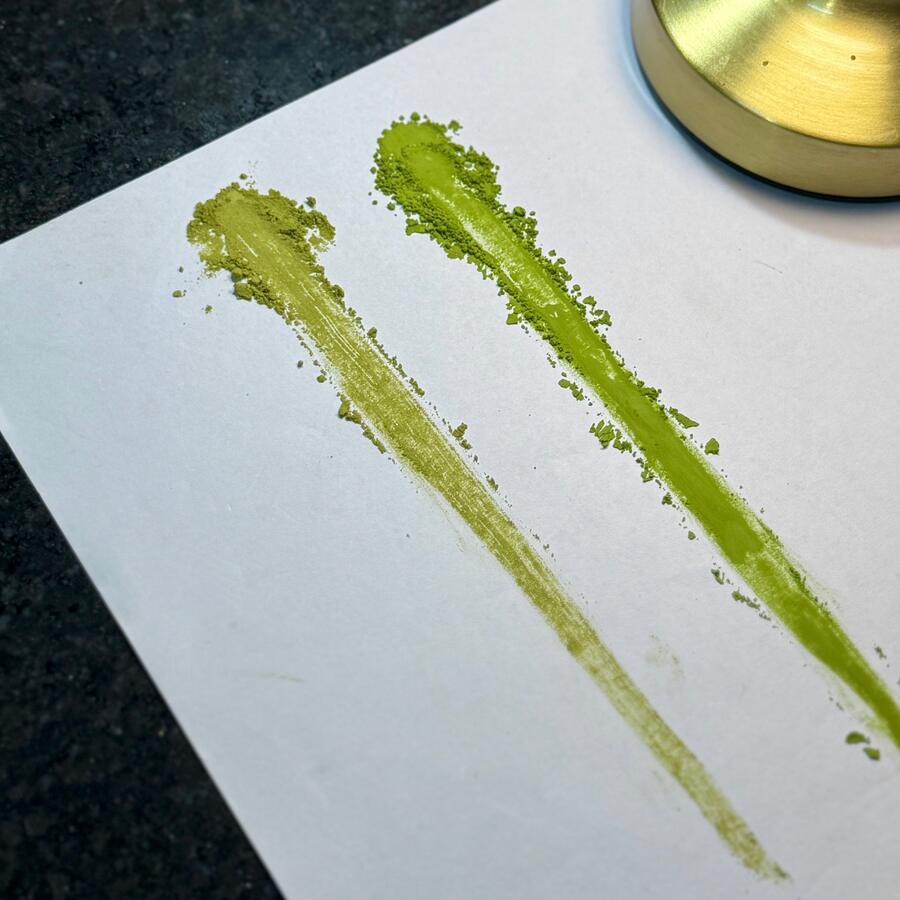
Good matcha is bright green while bad match is dull Ankita Sarkar
Once you know what you’re looking for, fake or stale matcha is easy to spot.
“The colour has to be an electric bright green,” says Ashmita. “If it’s pale, dull or brownish, it’s oxidised — or not matcha at all.”
Ankita adds that it’s also about the grade. “Ceremonial grade is top tier, then comes premium, then culinary,” she says. “Culinary grade uses older leaves, so it’s more bitter and grainy. If someone’s first matcha is culinary, they’ll hate it.”
Balance is another giveaway. “A good matcha latte should still look green,” Ashmita says. “If it’s pale milky green, the café has drowned it in milk. That’s not matcha, that’s coloured milk.”
She says AMPM spent months experimenting with ratios and suppliers before finalising a vendor who sources directly from Uji, Japan. “We tested grades, checked colour and smell, and tasted it in recipes until it was perfect,” she says.
Storing and enjoying matcha
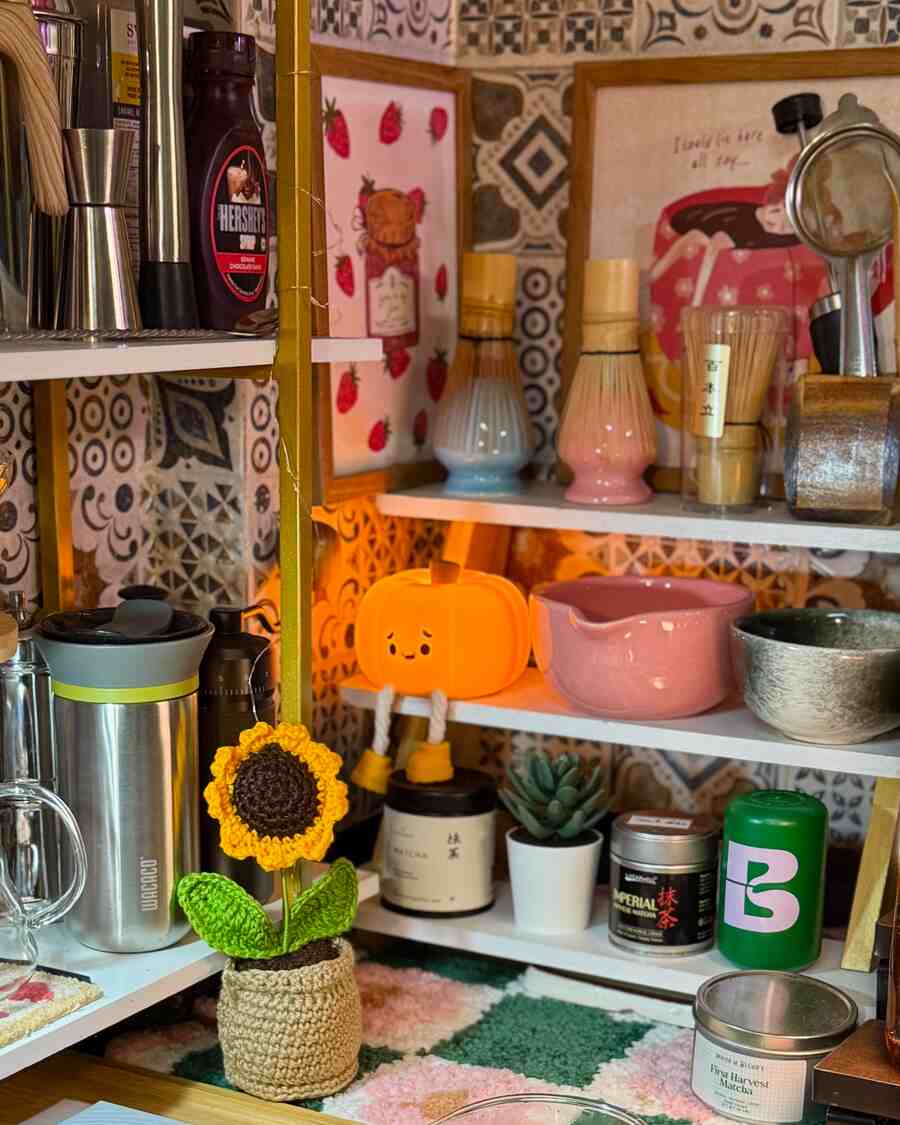
Ankita’s Matcha set up Ankita Sarkar
Matcha is delicate. “It must be stored in airtight containers away from light and heat,” Ankita says. “If you buy too much and don’t seal it properly, it loses its colour and turns bitter.”
She’s even seen brands selling “airtight matcha containers”. “It may or may not be marketing gimmicks,” she admits, “but the idea is right — matcha needs care.”
Is matcha just a fad?

Looks like matcha is here to stay AMPM
Maybe not.
“Right now every café in Kolkata has a basic matcha latte,” Ashmita says. “When we started, almost no one had it. Now there’s berry matcha, mango matcha, yuzu matcha, even cold foam matcha.”
She thinks most people order it for the look — that bright green Instagram glow. “For 70 per cent of people, it’s a trend,” she says. “But some have started drinking it for the calm energy it gives. It’s not like coffee — no jitters, just slow focus.”
Ankita has seen that change too. “People come to me saying they hated matcha before,” she smiles. “I tell them, if you come with an open mind, I can change your opinion. And I’ve done that.”
Both Ashmita and Ankita agree that Kolkata is at the same stage with matcha as it once was with coffee. “Remember when everyone just ordered cold coffee?” Ashmita says. “Then came single origin beans and tasting notes. Matcha will follow the same path.”
Ankita puts it more simply. “Don’t complicate matcha,” she says. “Just make sure it’s good quality. Whisk it right, drink it slow, and enjoy the ritual.”
